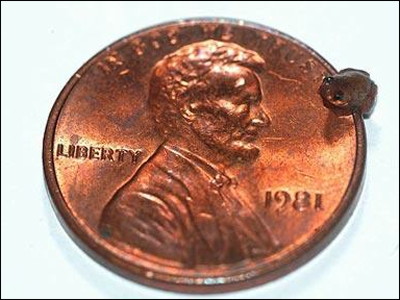The mystery that ``the size is different on the east side and the west side of the mountain even though it is the same kind of mouse'' is finally clarified

A research paper has been published that shows that mice living on the west side of the
Andean rain shadow effect drives phenotypic variation in a widely distributed Austral rodent - Teta - Journal of Biogeography - Wiley Online Library
https://doi.org/10.1111/jbi.14468
These mice grow bigger on the rainier sides of mountains.
https://www.fieldmuseum.org/about/press/these-mice-grow-bigger-rainier-sides-mountains-it-might-be-new-rule-nature
These Mice Grow Bigger on One Side of Their Mountain Home. Now We Know Why : ScienceAlert
https://www.sciencealert.com/these-mice-grow-bigger-on-one-side-of-their-mountain-home-now-we-know-why
The research was published by the research team of Assistant Professor Noe de la Sancha, a researcher at the Field Museum of Natural History in Chicago and a mammalian scholar at DePaul University . When the research team examined the skulls of 450 skulls of Abrothrix hirta, a mouse of the genus Abrothrix , which lives in the southern part of the South American continent, they noticed that the size was divided into large and small depending on the individual.
Bergmann's law is generally known about the size of animals, which states that ``even among warm-blooded animals of the same species, those that live in colder regions have a greater specific gravity.'' Warm-blooded animals constantly release heat to keep their body temperature constant, and in warm regions, it is necessary to increase the body surface area per body weight to promote heat dissipation, so a smaller body is advantageous. . Conversely, in cold regions, a larger body is more advantageous in order to suppress heat dissipation.
However, according to the research team, the size of the skull of Abrothrix hirta did not match any conventional biological laws, including Bergmann's law. As a result of further research, it was found that the skull of Abrothrix hirta differs in size depending on longitude, that is, east and west. De La Sancha attributed this east-west size difference to differences in habitat resources.

However, Assistant Professor De La Sancha, who did not understand why the difference in resources between the east and west was born, suddenly said, ``
The air above the sea contains water vapor, and when the sea warms, the water vapor rises. The west-to-east jet stream pushes water-vapor-laden air out of the ocean and onto the continents. However, when the air tries to cross the Andes Mountains, the altitude rises and the temperature drops, and the water vapor in the air condenses and rains. And when you cross the mountains, the air becomes dry. This phenomenon is called rain shadow.
Depending on the height of the mountain range, it may rain only on the west side of the mountain range and not at all on the east side. There are many areas that are as dry as a desert. Then, the research team led by Assistant Professor De La Sancha confirmed that the size of the skulls of 450 animals corresponds to this regional difference due to rain shadow, saying, 'It rains on the west side of the Andes Mountains. 'This abundance explains why rats in the west, where they have access to enough food, tend to be larger.'

In addition, Assistant Professor De La Sancha points out that research results may affect the amount of food consumed by climate change, which may affect the ecology of various animals, including mice.
Related Posts:







